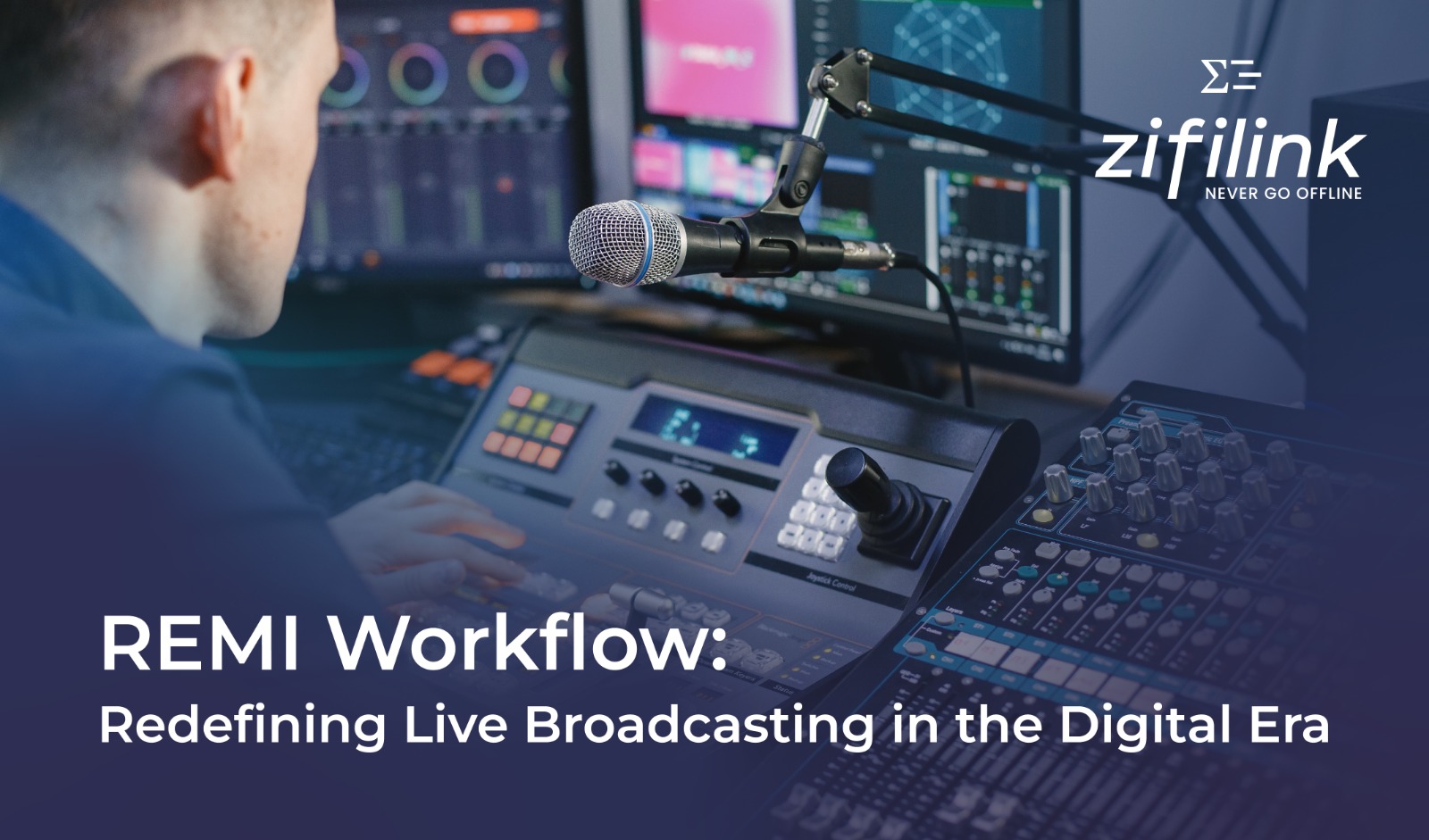
REMI, which stands for Remote Integration Model, is a dynamic production workflow. It revolutionizes the way content is captured, managed, and distributed in the broadcasting industry. With REMI workflows, the traditional on-site production model is transformed into a remote-based approach. In this content is captured from a remote location and seamlessly integrated and controlled from a central technical facility.
Media channels are adopting innovative method to enhance efficiency, flexibility, and cost-effectiveness in delivering real-time content. This method retains all the essential elements of a standard broadcast production. By leveraging advanced technologies and streamlined processes, Remote Integration Model workflows have become a game-changer in the realm of live broadcasting.
Elevating Connectivity with Zifilink and Bloom
In the contemporary REMI workflow, state-of-the-art technologies play a crucial role in facilitating the transmission of live video content. One such advancement is the utilization of cutting-edge devices like bonding routers and internet bonding solutions. Benlycos Advanced Bonding Technology (BABT) is instrumental in enabling bonding routers like Zifilink . and it combine multiple internet connections into a single, fast connection. and also ensuring consistent and uninterrupted live streaming. In addition to BABT, the REMI workflow also benefits from Benlycos Load Balancing Technology (BLBT). BLBT ensures efficient distribution of the workload across these connections, enhancing stability and performance during live video broadcasting.
One notable player in the field of internet bonding routers is Zifilink, which leverages BABT and BLBT to provide broadcasters with reliable and seamless internet connectivity. Zifilink’s bonding routers combine multiple internet connections to achieve faster speeds, improved reliability, and seamless streaming of live video content from any location. These solutions offer increased bandwidth, reduced latency, and heightened resilience, enabling media channels to deliver high-quality live broadcasts with utmost efficiency. Another notable solution in this space is Bloom, which also offers internet bonding capabilities for enhanced connectivity in REMI workflows.
In today’s digital landscape, app-based live streaming has emerged as the preferred method for broadcasting live content worldwide. With the increasing popularity of smartphones and the widespread availability of high-speed internet, live streaming through dedicated mobile applications has become the go-to choice for delivering real-time updates, news coverage, sports events, and entertainment experiences to audiences.
App-Based Live Streaming Transforming News Consumption Dynamics
App-based news has transformed news consumption by offering users instant access to news content, personalized news recommendations, multimedia-rich experiences, real-time updates, interactive features, offline reading capabilities, and customizable notifications. With news apps installed on their smartphones or tablets, users can stay informed anytime, anywhere, receiving tailored news feeds based on their preferences and interests. This transformative approach has revolutionized the way people consume news, providing convenience, customization, and immersive experiences right at their fingertips.
Recognizing the immense potential of app-based live streaming, leading national channels like NDTV in India have been at the forefront of adopting this innovative approach. It was one of the pioneering Indian channels to embrace app-based live streaming, leveraging its own mobile application to bring live broadcasts and on-demand content directly to viewers smartphones and tablets. By embracing this forward-thinking approach, NDTV has paved the way for other Indian channels to follow suit, recognizing the power of app-based streaming in reaching a wider and more engaged audience.
Revolutionizing Broadcasting: From VSAT to Internet-Based Connectivity
One of the pivotal changes brought about by the Remote Integration Model workflow is the replacement of traditional VSAT vehicles with internet-based connectivity. In contrast to VSAT vehicles, which were constrained by factors like line-of-sight requirements and high expenses. Internet connectivity brings increased flexibility and cost-effectiveness to live broadcasting. The shift to internet-based connectivity in the REMI workflow allows broadcasters to transmit live video feeds using common internet connections.
This change leads to quicker setup and lower costs. Benlycos Advanced Bonding Technology (BABT) and Benlycos Load Balancing Technology (BLBT) are instrumental in facilitating a reliable and smooth REMI workflow. BABT enables bonding routers like Zifilink and Bloom to combine multiple internet connections. It have a single, fast connection. ensuring consistent and uninterrupted live streaming. Meanwhile, BLBT ensures efficient distribution of the workload across these connections, enhancing stability and performance during live video broadcasting. The REMI workflow has ushered in a new era of live broadcasting by leveraging internet-based connectivity and advanced bonding technologies. Major media channels have embraced this transformative approach to enhance their agility, cost-effectiveness, and content delivery capabilities.
With Zifilink, Bloom, and the integration of BABT and BLBT technologies, REMI workflows can achieve enhanced connectivity, better workload distribution, and improved performance, redefining the way content is captured, managed, and distributed in the broadcasting industry.




About The Author: Deepak
More posts by Deepak